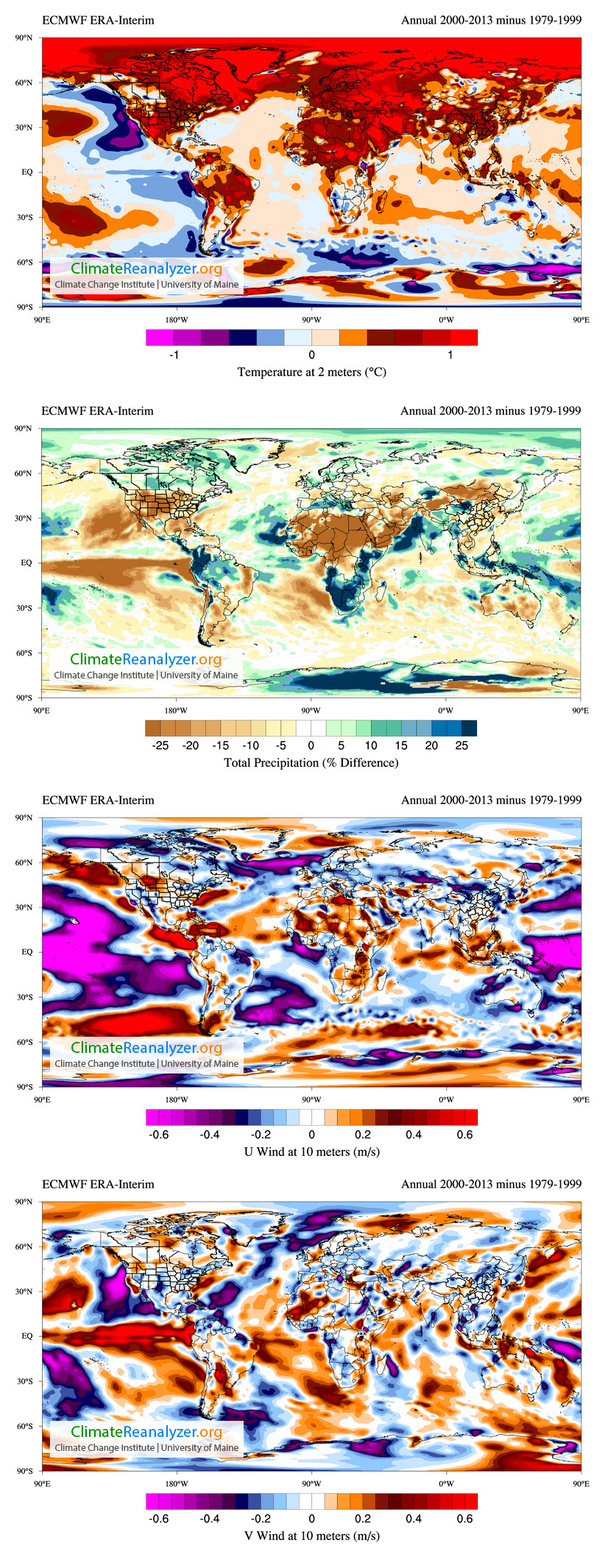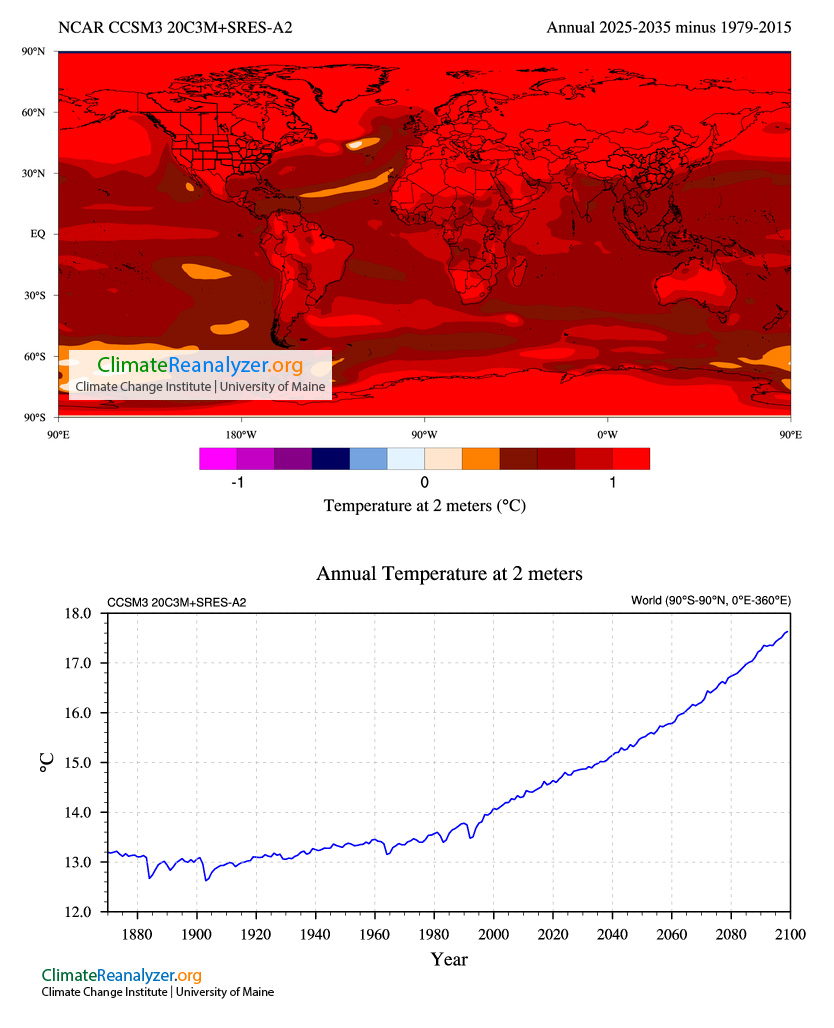|
by Paul Mayewski The effects of climate change are, and will be, different everywhere. This is not news. But we are now beginning to see how some of the harder-to-predict details are unfolding around the world; the first set of plots below show how air temperature, precipitation, and winds are starting to change around planet.  These plots show the changes in temperature (top), precipitation (second), east-west winds (third), and north-south winds (bottom). They were obtained by subtracting the average of these values for 1979 to 1999 from the average for 2000 to 2013. For the wind plots, a positive value means an increase to the east (third plot) or north (bottom plot). Not only are these local changes harder-to-predict, but many are extremely rapid and thus profoundly challenge traditional planning approaches. Detailed predictions are hard enough that modeling often yields more uniform, and gradually changing, predictions as shown in the plots below. What planning strategies can we deploy in the face of such significant uncertainty about what climate we will have where we live and do business?  Model predictions for air temperature changes (2025 to 2035 minus 1979 to 2015 averages) around the world in the top plot, and global average temperature in the bottom plot. Temperature changes are not likely to be so uniformly distributed around the world, and the increase in predicted global average temperature is likely more gradual than we have observed in the past. As individuals we respond to uncertainty by imagining several possible outcomes, guessing at their probabilities, and then making choices accordingly: that is, we imagine various scenarios and decide what to do now based on what we think might happen next.
“Scenario” planning is an approach to formalizing, on a larger scale, the intuitive planning we do as individuals on a daily, informal basis. It allows abrupt or uncertain events occurring at different, and uncertain, times to be incorporated into planning: just what is needed for climate change. The U.S. military, and many businesses, began using Scenario Planning after World War II and, in 2013 the National Park Service began applying Scenarios to their climate change planning . The Climate Change Institute has begun work on Scenario Planning tools for a wider range of uses, from local to global and from business to government, with our Climate Futures program. We are excited about this approach and about providing these tools to help policy makers around the world turn scientific discoveries into sound decisions. |
 RSS Feed
RSS Feed